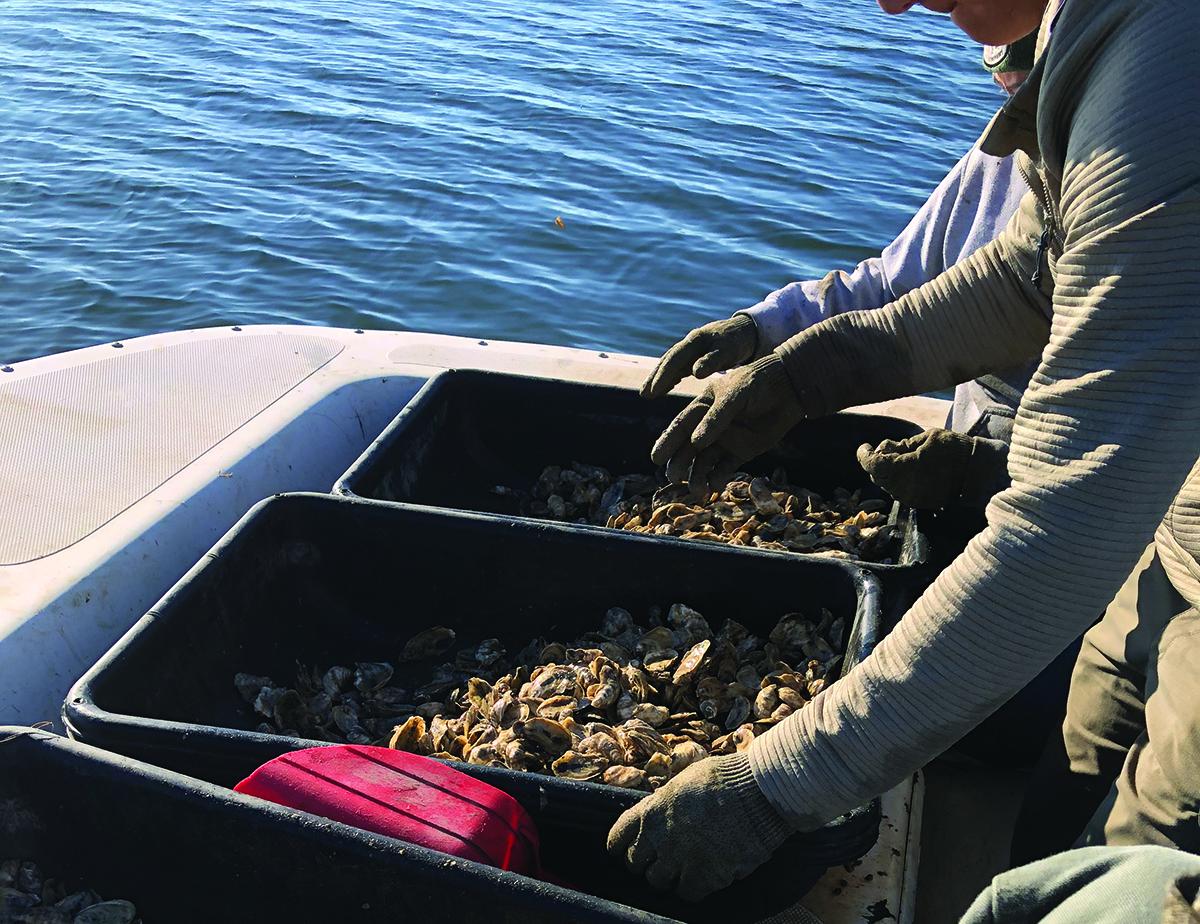
by Megan Hayes, PhD Candidate, Environmental Studies Program
It was oysters who taught me about tides. Or, more precisely, it was oysters who taught me to give better attention to the tides. An oyster is a kind of bivalve, and bivalves are a class of aquatic mollusks that have, in the collective poetic descriptive of Wikipedia, “laterally compressed soft bodies,” which are enclosed in calcified exoskeletons made up of a hinged pair of half-shells, or valves.
When they feel safe, an oyster is open to receiving the world. In the right conditions, an oyster will lie in their watery milieu, fixed in place by a tiny attachment created through secretions of their own mineral bioadhesive, and they’ll yawn themselves open. The act of opening through the relaxation of their two shells—a behavior known as “gaping”—is the only discernible behavior of oysters, and it allows them to take in the watery world around them, filtering up to fifty gallons of water per day in search of food.
When stressed, an oyster will fasten their shells closed, which they do with the impressive speed and force of their aductor muscle; a force you’ll have encountered if you’ve ever tried to shuck an oyster. The instinct to close around their soft body is a protective response to changes in water temperature, chemistry, or even noise, but also routinely—as in, twice daily—to the ebb of a tide. When an oyster closes, they hold tight within their shells a gulp of their watery surround. It’s thanks to this marine microcosm held safe inside of their locked valves that oysters can stay closed for so long, around two weeks.
Oysters living in the intertidal zone—either wild or aquacultured on oyster farms—must be sensitive to tides. They need to know to close when the water is rhythmically tugged away from their shoreline toward some other high tide elsewhere on the planet. For the oysters, this tidal attunement is a matter of life or death. For Xochitl Bervera, a former prison abolitionist turned oyster farmer I first met in the summer of 2023, the stakes of tidal attunement are perhaps a little less immediate and a little more distributed. But they are vital, nonetheless.
It was a Google search for “queer oyster farmer” that first led me to Xochitl. The Florida farming project Xochitl and her partner, Kung Li, started a few years ago was one of the first results of my Google search, and after poking around on their website for just a few minutes, I was pretty immediately smitten. So, what was there to do but slide into their DMs and ask if we could meet over Zoom? After a few hurricane season delays, we did meet, and I got to learn about Xochitl’s journey from 25 years of prison abolition organizing to oyster farming, and the powerfully principled orientation she and Kung Li bring to their farm work. And then, in the Fall of 2024, I was able to visit Florida, thanks to a CSWS Graduate Student Research Grant. In Apalachicola, I learned more about their work by joining them on the water and spending some time helping on their farm (which is something I do whenever I can, out of a desire to give my time and labor to those I am learning from and with).
Tides are an important part of life for all oyster farmers, but in Apalachicola, I was especially struck by the way in which attunement to tidal time was a clear intention for Xochitl and Kung Li. They had been drawn to the water out of a reparative desire to move beyond the frenetic grind of capitalism—including the urgency that can keep nonprofit work trapped in the same temporal logic as capitalism. Now, they spend their days oriented by the tides (and so also the moon and the wind) and tending to the water by tending to oysters. In turn, this allows them to tend to the social ecology of Apalachicola, a place that has been shaken by the over-exploitation of oysters and the toxic ripple effects of petro-capitalist extraction, especially in the wake of the 2010 BP Deepwater Horizon oil spill.
In our first conversation, Xochitl mentioned a famous quote by Mariame Kaba: “What’s needed are a million experiments.” In Apalachicola, I came to see how this sentiment ties together their abolitionist work and oyster farming. It matters that they tend to their oysters within this framework of experimentation, as a means of finding and prefiguring new worlds and new ways of being with each other. It matters that their tending is oriented by the refusal of harm. And it matters, too, that oysters lead them through their experiments, on a farm called Water is Life.
—Megan Hayes received a 2024 CSWS Graduate Student Research Grant for this project.

